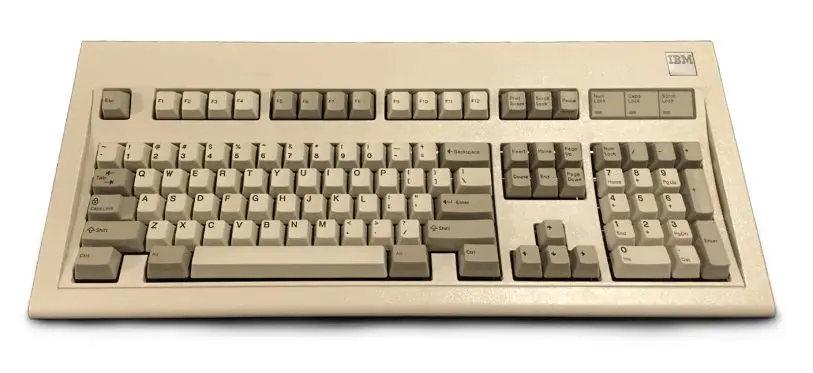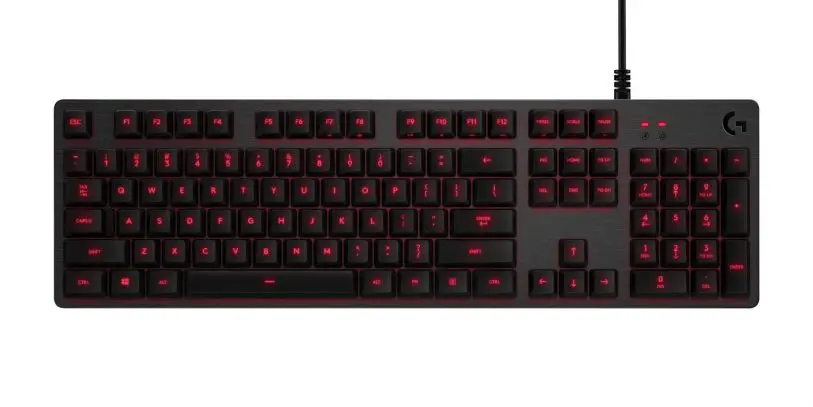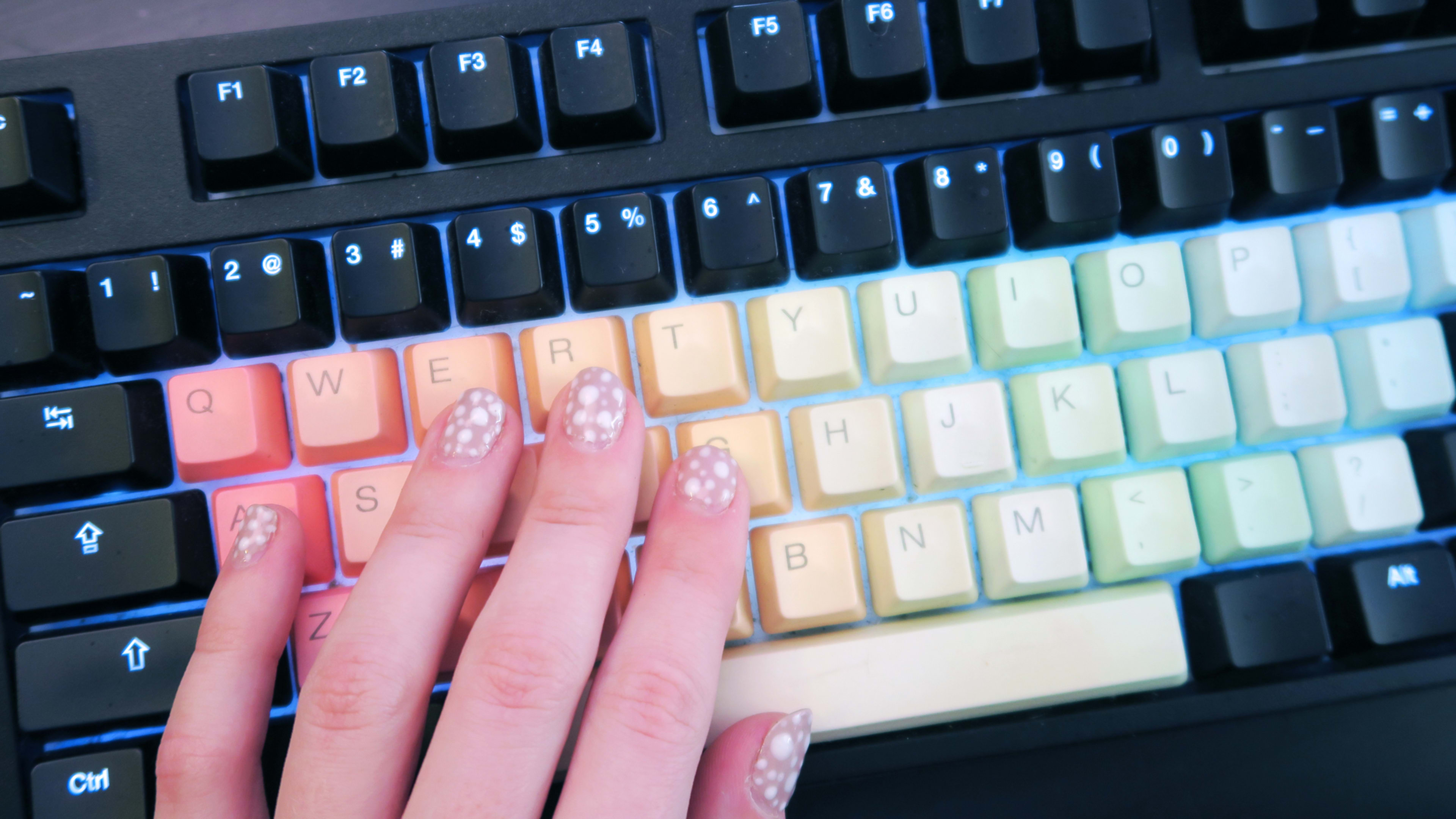Every day, millions of PC users hunch over keyboards that perform adequately enough to pre-empt much thought about them. But for fans of mechanical keyboards, more than a half-dozen variables might go into determining whether the object of their fingers’ force is worthy to send characters to their displays.
Mechanical keyboards were a standard feature of many early PCs. Early IBM PCs were known for the Model M keyboard, with keys that offered a famously satisfying response and audible “clack” as they were depressed. Their distinctive feel was due to a type of switch—the mechanism below the keycap that signals the production of a character—called a buckling spring.
However, mechanical keyboards became a rarity after manufacturers switched to dome switches in the early ’90s. Though less expensive and allowing for sleeker keyboards, they offered rated life (measured in key presses) that was much shorter. Furthermore, they provided what many considered an inferior tactile response.

If you care about keyboard feel, what you really care about are the switches below the keyboard caps. Among modern mechanical keyboards, the most well-known switches are the MX Series switches from Cherry. The various models are named after colors such as blue, red, brown, clear, and white. Their names are merely shorthand for a range of factors such as how much force is required for them to be depressed, and whether they produce an audible click like classic mechanical keyboards.
Of the Cherry MX switches, the two most popular are red (optimized for gaming) and blue (optimized for writing), with brown something of a middle ground. While there are other suppliers with long histories such as ALPS Electric, Cherry’s switches are so well-known that other companies have cloned them.
However, with mechanical keyboards often costing over $100 and very few of the manufacturers having much of a retail presence, how does one ensure that they really want a specific kind of switch without ordering multiple keyboards and returning the ones they don’t want? A number of companies have released switch testers that exist for no other purpose than trying different key switch feels. As one Amazon reviewer offering five stars for a six-switch model notes, “There should really be a good way to pass these along once you’re done with them. Nobody needs this for more than a couple days.”

Keycap Kustomization
While mechanical keyboards are favored by many writers, gamers really make up the vast majority of their purchases. Responsiveess and longevity are the main drivers, but style also plays a role. Joel Tubré, president of Tennessee-based mechanicalkeyboards.com, an online retailer that lists more than 40 brands on its site, notes that some gamers like the retro stylings of classic keyboards. The easily changed key caps on many mechanical keyboards allow for classic typewriter-styled keys, but other customers prefer keyboards awash in LEDs that can be programmed to create their own light shows.
Massdrop, a website that offers products to enthusiasts for a limited time, has offered dozens of such key cap sets. These include full sets of clear, striped, and pastel rainbow keys as well as novelty sets that include cats, translucent frogs, and desserts. Some brands offer keyboards with so much customization in mind that they are sold as kits or as a menu of components from which customers choose.

Tubré says he hopes that mechanical keyboards will one day banish today’s cheap keyboards to history. But that’s a battle that slopes upward like rows of alphabet keys toward the numerals. For one thing, in our increasingly mobile world, the pressure for thinner keyboards has intensified in the past years even as customers bemoan their limitations.
Microsoft, for example, scrapped the movement-free Touch Cover it introduced with its first Surface tablet in favor of a Type Cover with more traditional keys. Lenovo, after seeing some success with the Yoga Book, which uses a flat surface for a keyboard, has not followed through on plans to expand the line into Chromebooks. Even Apple’s latest MacBook and MacBook Pro laptops have drawn ire for their keyboards, with “butterfly” switches that cut down on key travel to accommodate a thinner clam-shell design. Stepping up from the typing on glass required for a naked tablet raises expectations for a tactile experience.
The height and weight of mechanical keyboards and their customers’ desire for the fastest possible response times limit their portability potential, although there are both low-profile models and a few Bluetooth-based models such as the typewriter-themed Penna and Lofree Four Seasons.
While dozens of small keyboard makers make only mechanical keyboards aimed largely at the video game market, Logitech is a keyboard giant that caters to a market beyond purists. As technical marketing manager Andrew Coonrad notes, the company had great success with its gamer-focused “G” series of non-mechanical keyboards for years before mechanicals began their new ascent. However, it has more recently not only jumped on the mechanical bandwagon with a few models, but also invested in creating its own “Romer-G” switches that it claims has faster response times, a critical metric for the highest-end gamers.
Coonrad says we can also expect to see more “mechanical-like” keyboards like its Prodigy G series that may not have the longevity of the real thing but cost less. Amazon, for example, already sells a “mechanical-feel” keyboard from its private-label brand for about $35. It certainly won’t win any cred from e-sports professionals, but may at least provide consumers with an eye-opening quality typing experience—the kind that once came in the box.
Recognize your brand’s excellence by applying to this year’s Brands That Matter Awards before the early-rate deadline, May 3.
